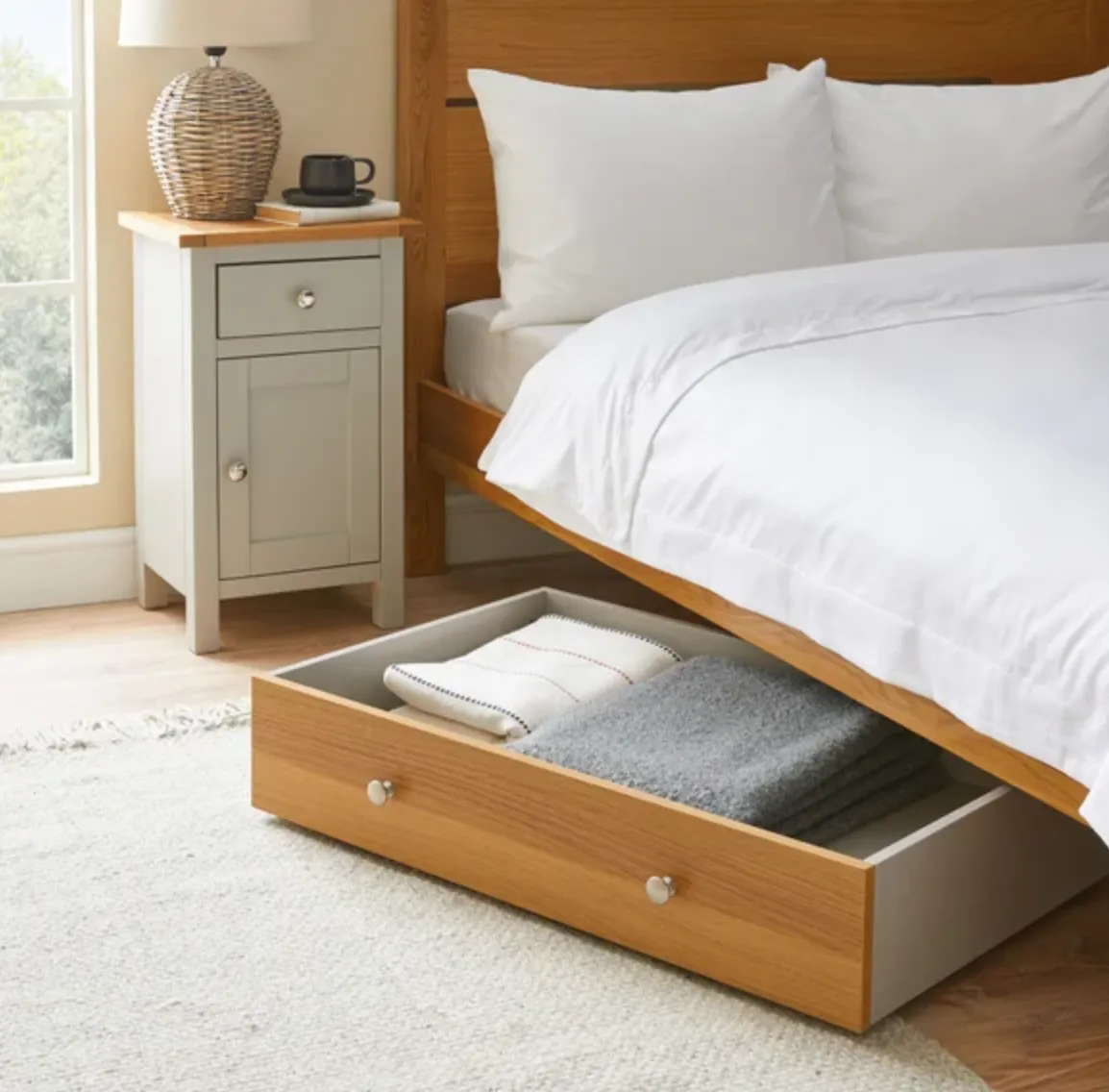Do you feel like you're always tidying? It turns out you might not be the only one.
Studies have found that on average, Brits spend 5 hours or more on domestic cleaning activities each week, while some take up to a whopping to 15 hours to complete household chores and tidying.
We all recognise the saying ‘prevention is better than cure’ when it comes to health, but the same logic applies to keeping our homes tidy. It may sound like common sense, but we’re all guilty of leaving things where they don’t belong, and before you know it, you have a mammoth clearing task ahead. If this sounds like you, then it's a sign that it might be time to declutter your home for good.
Keep reading to discover the ultimate guide to decluttering your home, as told by experts, including world-renowned organiser Marie Kondo and TV's Dilly Carter.
How to declutter your home (for good)
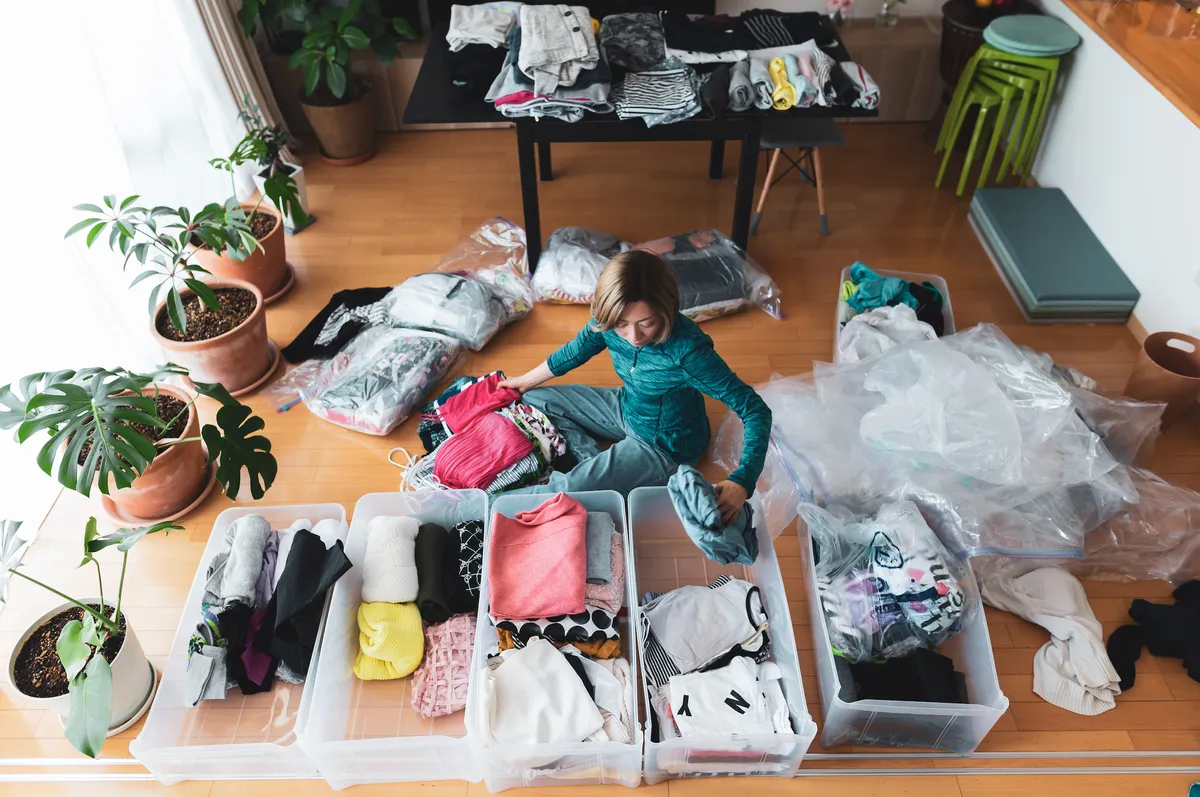
Allocate plenty of time to sort
Sometimes, you need to make more mess before you clear it, so allocate a realistic chunk of time to do your decluttering. Whether it's an afternoon, a whole day or an entire weekend, set yourself enough time to get to the back of cupboards and focus on reorganising your belongings properly.
'I would suggest setting aside a specific day to start your decluttering journey, and start off in small areas – such as reorganising your bathroom cupboard or taking one drawer in the kitchen at a time,' says Sort Your Life Out's organiser extraordinaire, Dilly Carter. 'It takes time to organise your home properly, so don’t be alarmed if it doesn’t happen all at once.'
Read our full chat with Dilly for more of her decluttering tips.
Fix broken items first
Fix any broken items lying around the house before you start your clean. If you still haven’t fixed them, it’s a sign that they need to go, so don’t hesitate to part with them.
Only keep items that spark joy
By now, most of us have heard of Marie Kondo. Her book, The Life Changing Magic of Tidying, and its follow-up, as well as a spin-off Netflix show saw her transform normal people’s lives from chaotic to calm with some simple organisation skills.
A key principle part of Kondo's method - known as KonMari - is to practice gratitude. That's why her method involves picking every item up and seeing whether it sparks any joy. If it does, you should keep it, however, if it doesn't, you should chuck it out. This will prevent your home from being flooded with unwanted items, that may cause you more stress than good.
'Decluttering and tidying are powerful tools, but they are not the destination,' says Marie. 'The true goal of tidying is to surround yourself with the things that you love the most so that you can live your ideal life.
'An underlying principle of the KonMari Method™ is to ask yourself what kind of life you want to live and tidy according to that. When you individually assess your belongings and organise your home through that guiding principle, you set the stage for a transformation. This is the magic of tidying!
The true goal of tidying is to surround yourself with the things that you love the most so that you can live your ideal life.
Marie Kondo - tidying expert, author and founder of KonMari
Address clutter by category
'The KonMari method focuses on breaking clutter into five different categories - clothing, books, documents, miscellaneous and sentimental,' explains Rebecca Snowden, Interior Style Advisor at Furniture Choice. 'By breaking your possessions down into these categories, it allows you to find out exactly what you have – and it’s much easier than tackling a whole room at a time.'
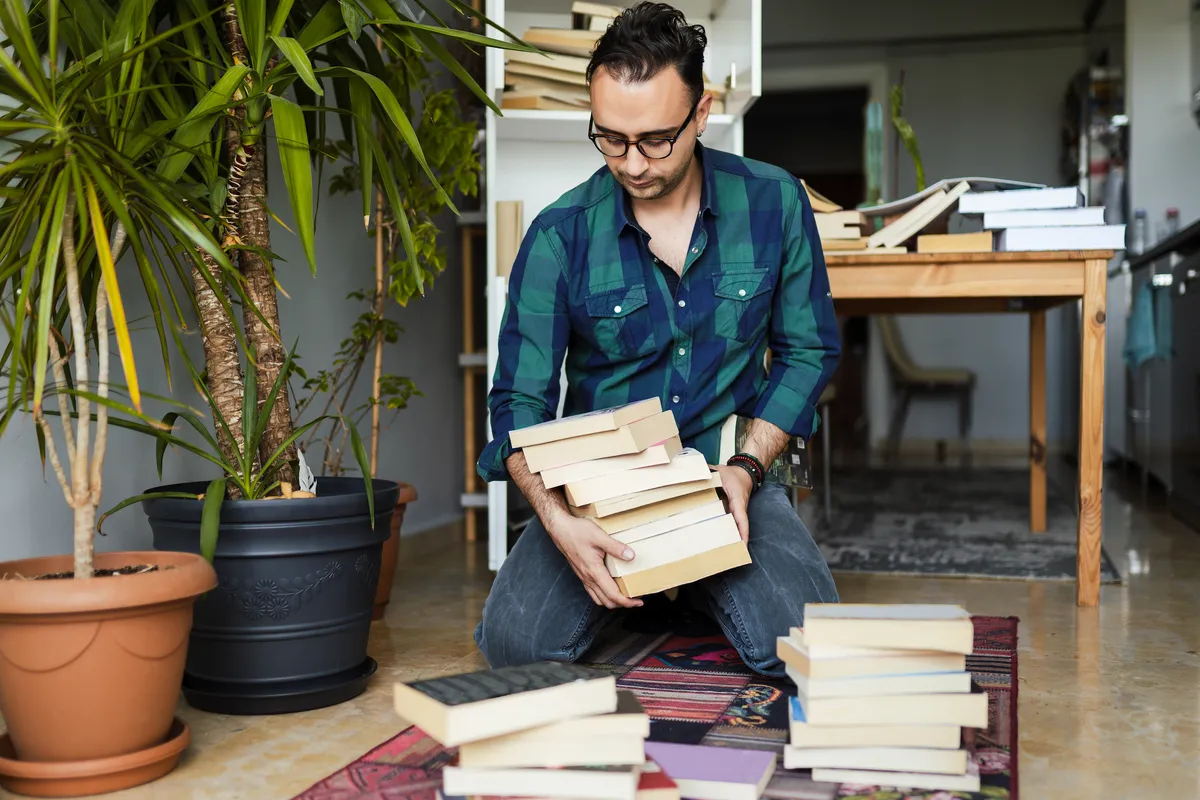
If your belongings don’t fall exactly into those categories, you can tackle one area at a time, but it makes it easier if you break that room down into object types. So, if you start with the living room, focus on books, then move onto DVDs and so on, ensuring each section is done before you skip to the next one. This way, you don’t end up turning your whole space upside down and running out of time to finish the sorting.
'Tackling clutter based on the KonMari method helps to maintain order and prevents having to purge again,' adds Rebecca. 'This also helps on a psychological level, as it reminds us to think about what we need to buy instead of fixating on what we want.'
Work on a 'one of each' basis
When it comes to practical bits, such as tools, utensils and appliances, work on a basis that you only need one of each, or one for each person in the household if that makes more sense. If you’ve got duplicates for no justifiable reason, then it can go.
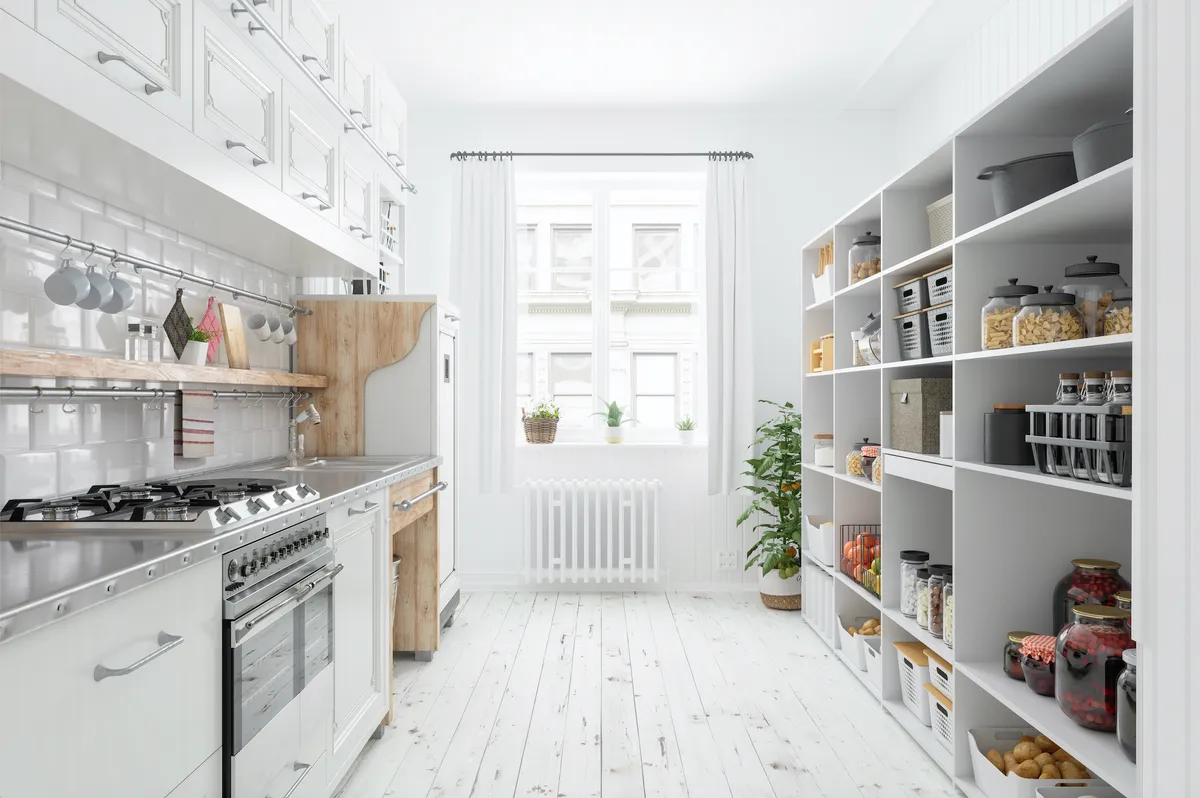
If the problem is that you’ve just got too much stuff for the size of your space, try a four-box method. Label each one ‘keep, ‘donate’, ‘throw’ and ‘store’. That way you’ll know exactly what it is you really need, and you can keep anything sentimental in a loft or storage cupboard instead of on display.
Kate Ibbotson, Declutter Expert and Professional Organiser from A Tidy Mind says: 'It can sometimes feel daunting and stressful to get rid of large bulky items, however the British Heart Foundation has made it as easy as possible to donate to them with their free collections service.
'You're more likely to feel relaxed at home, have energy for creative activities and it can have a knock-on effect of improving relationships, as well as a warm feeling from donating to charity.'
Fold and stand clothes
It may seem a tricky prospect to find a home for items that have made the cut - it therefore becomes important to keep everything in order, so it's easily identifiable. Kondo's method sees clothes folded in thirds, and then standing them up, as it requires less spaces. This means it works just as well in wardrobes as it does in smaller spaces, which include bedside tables and chest of drawers.

'This method may take some getting used to, but it makes it simple to visually keep track of the clothes you have,' says Rebecca. 'On top of that, if you wanted to colour code your wardrobe, the uniform look and size of each item means that turning your wardrobe into an Instagram-friendly dream is easily achievable.'
'The "fold and stand" method is also perfect for beds with built-in storage - a part of the room that can be easily overlooked. Ottoman beds have ample room for essentials like bedding and towels, and attached drawers that will benefit from this KonMari trick. This can help to create a sense of peace whenever a drawer or cabinet is opened to reveal a tidy and organised space.'
Utilise small boxes
The space under your bed and above your kitchen cupboards can become littered with bits and bobs, but if you clear out what you don’t need and pop the rest into boxes matching your décor, you’ll make useful space that complements the room and feels much calmer.
Small boxes are great for keeping loose items in order and organising things into categories, and due to their compact size, they can easily fit into hidden spaces like drawers and wardrobes, making them perfect for stray items that could otherwise go missing easily.
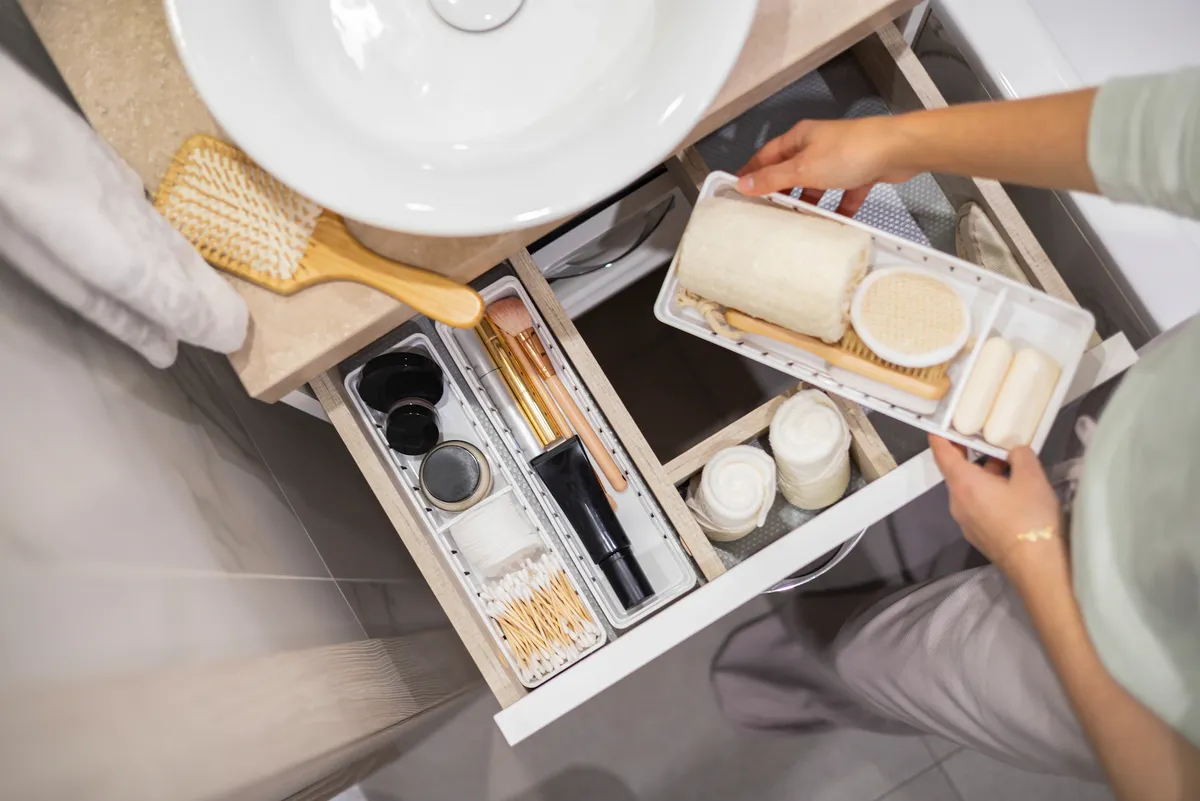
Old gift or shoe boxes are often a perfect size and shape to be repurposed as handy storage - and you can always get creative, and give the boxes a makeover to match the decor or complement their aesthetic.
Be ruthless
Be brutal. Unless something has sentimental value, you can usually replace it. If in doubt, throw it, and then if it’s really necessary later, you can buy another one that will take up less space or that doubles up to have another purpose.
Try and keep this attitude in mind going forward, too, in order to prevent clutter from taking hold again. 'The only way to maintain a space and keep it decluttered is by revisiting it consistently,' says Dilly. 'Making this part of your daily routine and tidying up at the end of each day will keep your space organised, stop you from buying more and will stop you from feeling overwhelmed.'
Looking for more organisation inspiration?
Check out our eight easy DIY projects to make extra storage space and ideas to increase your home's storage. If you're in need of practical accessories, read about smart drawer organisers to keep your home in order as well as savvy storage ideas for small spaces. And if you have time for a spot of cleaning, check out our four-step deep cleaning plan.
